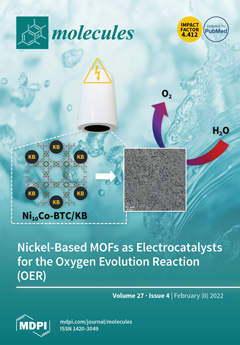Baicalin is a major active ingredient of traditional Chinese medicine
Scutellaria baicalensis, and has been shown to have antiviral, anti-inflammatory, and antitumor activities. However, the protein targets of baicalin have remained unclear. Herein, a chemical proteomics strategy was developed by combining baicalin-functionalized
[...] Read more.
Baicalin is a major active ingredient of traditional Chinese medicine
Scutellaria baicalensis, and has been shown to have antiviral, anti-inflammatory, and antitumor activities. However, the protein targets of baicalin have remained unclear. Herein, a chemical proteomics strategy was developed by combining baicalin-functionalized magnetic nanoparticles (BCL-N
3@MNPs) and quantitative mass spectrometry to identify the target proteins of baicalin. Bioinformatics analysis with the use of Gene Ontology, STRING and Ingenuity Pathway Analysis, was performed to annotate the biological functions and the associated signaling pathways of the baicalin targeting proteins. Fourteen proteins in human embryonic kidney cells were identified to interact with baicalin with various binding affinities. Bioinformatics analysis revealed these proteins are mainly ATP-binding and/or ATPase activity proteins, such as CKB, HSP86, HSP70-1, HSP90, ATPSF1β and ACTG1, and highly associated with the regulation of the role of PKR in interferon induction and the antiviral response signaling pathway (
P = 10
−6), PI3K/AKT signaling pathway (
P = 10
−5) and eNOS signaling pathway (
P = 10
−4). The results show that baicalin exerts multiply pharmacological functions, such as antiviral, anti-inflammatory, antitumor, and antioxidant functions, through regulating the PKR and PI3K/AKT/eNOS signaling pathways by targeting ATP-binding and ATPase activity proteins. These findings provide a fundamental insight into further studies on the mechanism of action of baicalin.
Full article






